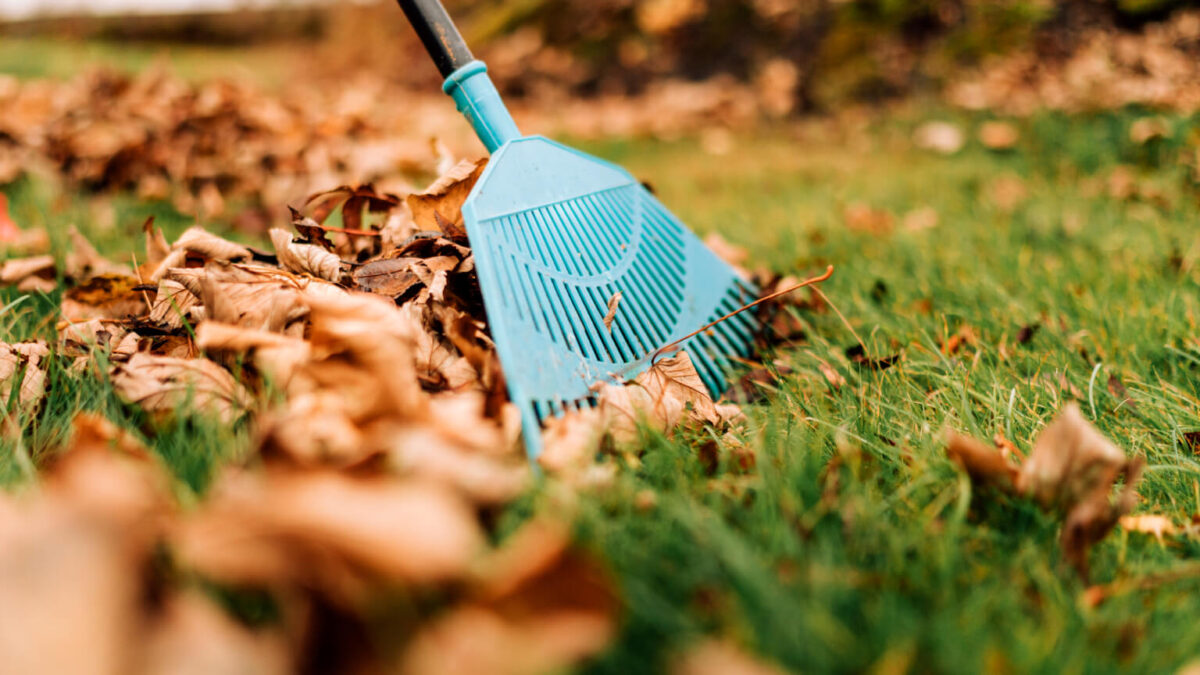How to Use Weed & Feed to Revive Your Lawn

Lawn care experts and green-thumb DIYers often use weed & feed to produce beautiful lawns and flower beds. Whether you’re keeping your lawn lush or needing to revive some of that emerald green color, using this product is a must. So what is it, and how is weed & feed used to create lush, beautiful yards? Here’s everything you need to know.
What is weed & feed?
Weed & feed is a term universally applied to lawn chemicals that both kill weeds and promote a healthy lawn. In general, it kills ugly weeds while helping your grass better absorb water and nutrients to improve its growth.
But as your grass begins to grow, it can start choking out unwanted weeds — meaning that you can phase out this chemical product slowly over time. But if you start to see growth decline or weeds take over your lawn, re-introduce weed & feed into your regular lawn care routine.
There are two types of herbicides generally used in weed & feed, which one you use (and when you use it) depends on the current weed situation you’re facing.
How does weed & feed work?
Weed & feed is a combination of minerals and systemic or non-systemic herbicides. The minerals provide nutrients (via fertilizer) to help your grass grow, while the herbicides kill the weeds.
Two forms of weed & feed are available for homeowners today. These are:
- Granules: Granular weed & feed comes in small, dry pellets covered with herbicide. You spread the granules over your lawn when it’s wet, allowing the weed & feed to stick to the weeds.
- Liquid: Liquid weed & feed is often mixed with water and sprayed over your lawn using a sprayer. You can apply the liquid version to wet or dry grass.
Regardless of which one you choose, you must follow the directions on the container to get the best results. Certain herbicides are best for certain weeds, so be sure to read labels carefully when choosing a brand.
Try to determine which weeds are present in the yard and then compare them to the products available. (The container will list which weeds are killed by the herbicide.) The minerals are largely the same, though some formulas may perform better for specific types of grass, be it Bermuda grass, St. Augustine grass, Kentucky Bluegrass, or any other.
Pre-emergent vs. post-emergent weed & feed
There are two types of weed & feed:
- Pre-emergent weed & feed
- Post-emergent weed & feed
Knowing which to apply is vital to clearing weeds and promoting a healthy lawn.
What is pre-emergent weed & feed?
You use pre-emergent weed & feed to kill weeds before they grow, so you can apply it on lawns with weeds already under control. For the best results, apply pre-emergent weed & feed each year, usually at the start of spring. This helps prevent weeds from returning. It’s best used on crabgrass and Japanese stilt grass.
Even if you completely killed the weeds the year before, they could return because new weed seeds are constantly transported into your lawn by air. So, even a perfect lawn should be treated with pre-emergent weed & feed annually.
What is post-emergent weed & feed?
The post-emergent herbicides are for weeds that are already present. You determine the frequency of application and the amount you should use by how many weeds fill the yard.
If there are so many weeds that the grass is being choked out, it may be wise to consult with a local landscaper or lawn care center for advice. Common uses for post-emergent herbicides are combatting bermudagrass and nimblewill.
How to apply weed & feed
You can apply granular weed & feed directly to a wet lawn either by hand or with a spreader. When water hits the granules, they dissolve and release the weed-killing chemicals (while also providing important nutrients to the grass).
Using a spreading allows you to apply just the right amount evenly across the lawn. Too many granules can harm grass, which would defeat the purpose. Also, overuse can result in potentially harmful runoff.
Many people choose liquid weed & feed because the chemicals are already diluted to safe levels. The liquid version may be bought in bulk or with an attached sprayer nozzle for convenience.
When to apply weed & feed
Pre-emergent herbicides can be applied at any time of day because they form a soil barrier to stop weeds from sprouting. Post-emergent weed & feed, however, is different.
When using post-emergent herbicides, check the instructions on the bottle or box. These products contain what are known as systemic or non-systemic herbicides.
Non-systemic herbicides cause damage to plant tissues, and therefore they may be applied at any time of day. However, systemic herbicides must enter the plants via the roots when the plant is undergoing active growth. Application of systemic herbicides depends largely on the growth region because plants — even weeds — grow differently in different regions.
The best weed & feed products
There is no single herbicide to kill every weed. So, to decide which product you should use, it’s important to know your weed (so you can effectively treat your lawn).
That said, many brands provide control of the most common weeds like dandelions, crabgrass, clovers, and dollarweed. Some of the best products for controlling most weeds include:
- Scott’s Weed & Feed (available in both granules and liquid)
- GreenView Fairway Formula Spring Fertilizer Weed & Feed (granules)
- Bio-Advanced 3-in-1 Weed & Feed for Southern Lawns (granules)
- Preen One Lawncare Weed & Feed (granules)
Frequently Asked Questions
Should I mow my lawn before using weed & feed?
Most products recommend mowing the lawn a few days before applying weed & feed. This helps the plants better absorb a non-systemic herbicide. Mowing also allows better access to the soil for systemic herbicides.
How do the seasons affect the use of weed & feed?
Depending on the U.S. Department of Agriculture growth zone where your lawn is located, early spring is best for most applications. This is more important if living in a northern climate. In many southern regions, any time of the year is fine. You should time your weed & feed application based on your growth zone to see the best results. You can usually find this information printed on the label.
Does property location matter when applying weed & feed?
Some weed & feed formulas are specific to certain regions. Make sure to read each weed & feed product label to determine the right one for your grass.



